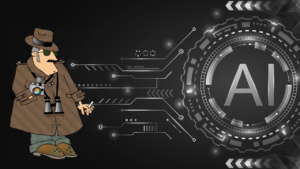“A new type of mobile app is departing from a long-standing practice in computing,” writes Tom Simonite. “Typically, computers have just dumbly waited for their human operators to ask for help. But now applications based on machine learning software can speak up with timely information even without being directly asked for it. They might automatically pull up a boarding pass for your flight just as you arrive at the airport, or tell you that current traffic conditions require you to leave for your next meeting within 10 minutes.” [“With Personal Data, Predictive Apps Stay a Step Ahead,” MIT Technology Review, 13 May 2013] At Enterra Solutions, we call this kind of application “cognitive computing.” Simonite reports:
“Bill Ferrell, founder and CEO of Osito, a company with an iPhone app, … calls this idea ‘predictive intelligence.’ Osito’s system foretells a person’s actions and needs from location, e-mail, and calendar data and uses those predictions to go beyond offering just information or advice. It also presents ways for a person to take action. A flight reminder will include a button to summon a cab, for example.”
Even though we may decades or more away from the singularity (i.e., the emergence of sentient computers) predicted by futurists like Ray Kurzweil, computer learning systems are proving the value of artificial intelligence on a much more limited scale. Limited though they may be, they are still pretty smart at what they are designed to do. Simonite continues:
“Machine learning experts at Grokr, a predictive app for the iPhone, have found they can divine the ethnicity, gender, and age of their users to a high degree of accuracy, says CEO Srivats Sampath. ‘That can help us predict places you might like to go better,’ he says. The information will be used to fine-tune the recommendations Grokr offers for restaurants and music events.”
Admittedly, some people find the idea of their smartphone tracking their activities and “getting to know them” a bit creepy; but, the cognitive computing genie is out of the bottle and won’t ever be going back in. Machine learning is also used in ways that users appreciate, like helping their email service filter out spam messages from their in box. Julie Smith reports, “In the battle of spam filtering, the art of war is machine learning, which keeps systems updated with the help of data. When you mark an email message as spam, you are contributing to a vast data set that helps the machine learning of filtering tools for Gmail or Yahoo or whatever else is your email provider.” [“Machine learning: 4 ways digital ‘pattern-matching’ is more than just spam filtering,” Technical.ly/Philly, 1 February 2013] Smith explains that “machine learning, a branch of artificial intelligence, is a scientific discipline that involves computers programmed to learn as a human does. Method and data sets are developed in programming software like C++, Java and Python.” The focus of her article was a presentation by Michael Becker, a data scientist at AWeber Communications. She reports that, during his presentation, “Becker broke the concept down, explaining that this type of computer intelligence is beneficial for things like spam filtering, fraud detection and price modeling. ‘I think lots of companies look for this sort of information — being able to categorize and use this data,’ Becker said.” Smith notes that “the concept of machine learning, which is essentially, data-driven pattern matching, is more broadly impactful than email filtering” or fraud detection. In fact, the ways that cognitive computing can be applied is only restricted by the imagination. Smith discusses four ways that cognitive computing is being used today to make our lives better. They are:
1. “Advancement of humanoid robots — By tracking the reactions to physical, vocal and decision making movements, robotics is leaping forward backed by machine learning. …
2. “Healthcare administration efficiencies — With the paperwork and forms and incredibly important details that flood the healthcare industry, there are a number of ways to approach making systems more automated. One is machine learning, as Boston’s Predilytics is doing.
3. “Wearable technology — How can digital tools embedded in clothes learn to alert potential medical problems, track athletic performance and more? Well, Nike, for one, is trying to find out.
4. “Better energy efficiency efforts — When humans don’t make the best calculations about how to heat, cool and maintain their homes and other buildings, smarter, machine learning structures could, as BuildingIQ is attempting.”
Smith concludes her article by noting, “Becker made the importance of machine learning clear — algorithms and data that are inputted into software programmed by the human mind catalyzed the capabilities of technological intelligence.” Cognitive computing systems require data — lots of data — if their learning is going to be both swift and accurate. That’s where so-called Big Data plays an important role. But, John Funge, cofounder and CEO of BrightContext, insists that Big Data needs cognitive computing as much as cognitive computing needs Big Data. He writes:
“When people think of big data, often it’s in terms of Hadoop clusters with gargantuan piles of data. … Today, most people talking about big data are referring to the perpetually incomplete process of periodically chunking through large sets of static data. But as our expectations for technology continue to grow, the tasks facing our systems are becoming ever more complex and multi-faceted. We expect our systems to operate more like the human brain. … To achieve a true integration of data ingestion, synthesis and timely action when dealing with such volumes of information, the systems of tomorrow must natively interpret distributed high speed data streams as seamlessly as the human brain blends the five senses together to get a complete picture of what is actually happening in real-time. The underpinning technologies that will support these systems are already beginning to emerge. Advanced sensor networks capable of detecting the most minute stimuli will serve as the eyes, ears and nose of tomorrow’s smart data systems, while stream processing platforms, in-memory and NoSQL databases, and massively parallel architectures will serve as the gray matter. … We’re still in the very early days of big data. We’ll look back on today’s batch-oriented point-of-view as quaint. Tomorrow, our smartest systems will instantly and masterfully oversee, optimize, manage and adapt processes that are as critical as they are complex, across a broad spectrum of industries, having taken their cues from the most ready example of a natural supercomputer we have: the human brain.”
A recent study by ABI Research confirms that interest in Big Data analytics is growing. The study found that “global spending on big data by organizations will exceed $31 billion in 2013” and that figure will more than triple over the next five years. [“Big Data Spending to Reach $114 Billion in 2018; Look for Machine Learning to Drive Analytics, Says ABI Research,” M2M WorldNews, 10 September 2013] ABI Research’s practice director, Dan Shey, told M2M WorldNews, “Machine learning and its application in advanced analytics is one area that will make both the public and private sectors data-savvier than anything we’ve seen so far. Big players such as IBM and HP are understandably moving to this direction, but at the same time we can also see analytics startups, like Ayasdi and Skytree, that have machine learning in their very DNA. Eventually, such innovations will put analytics within any domain expert’s reach. At that point, data will stop being ‘big’ again.” I agree with Shey. Cognitive computing holds the potential to turn Big Data back into data. That certainly will be the case when and if quantum computing is added to the picture.




